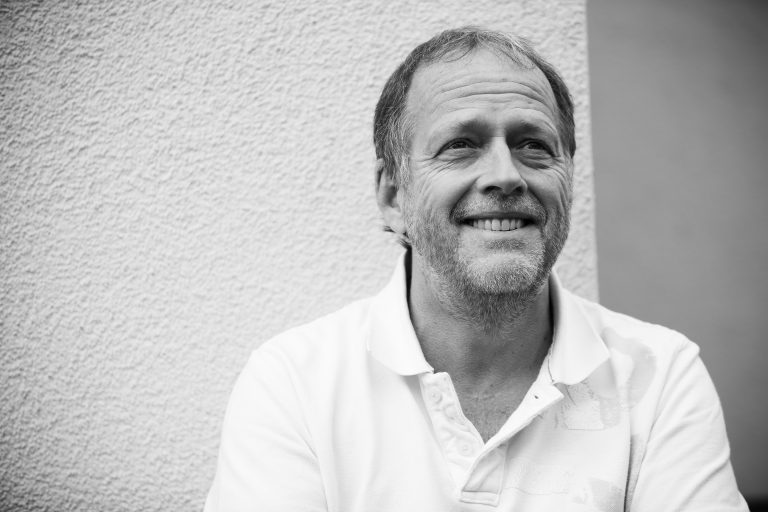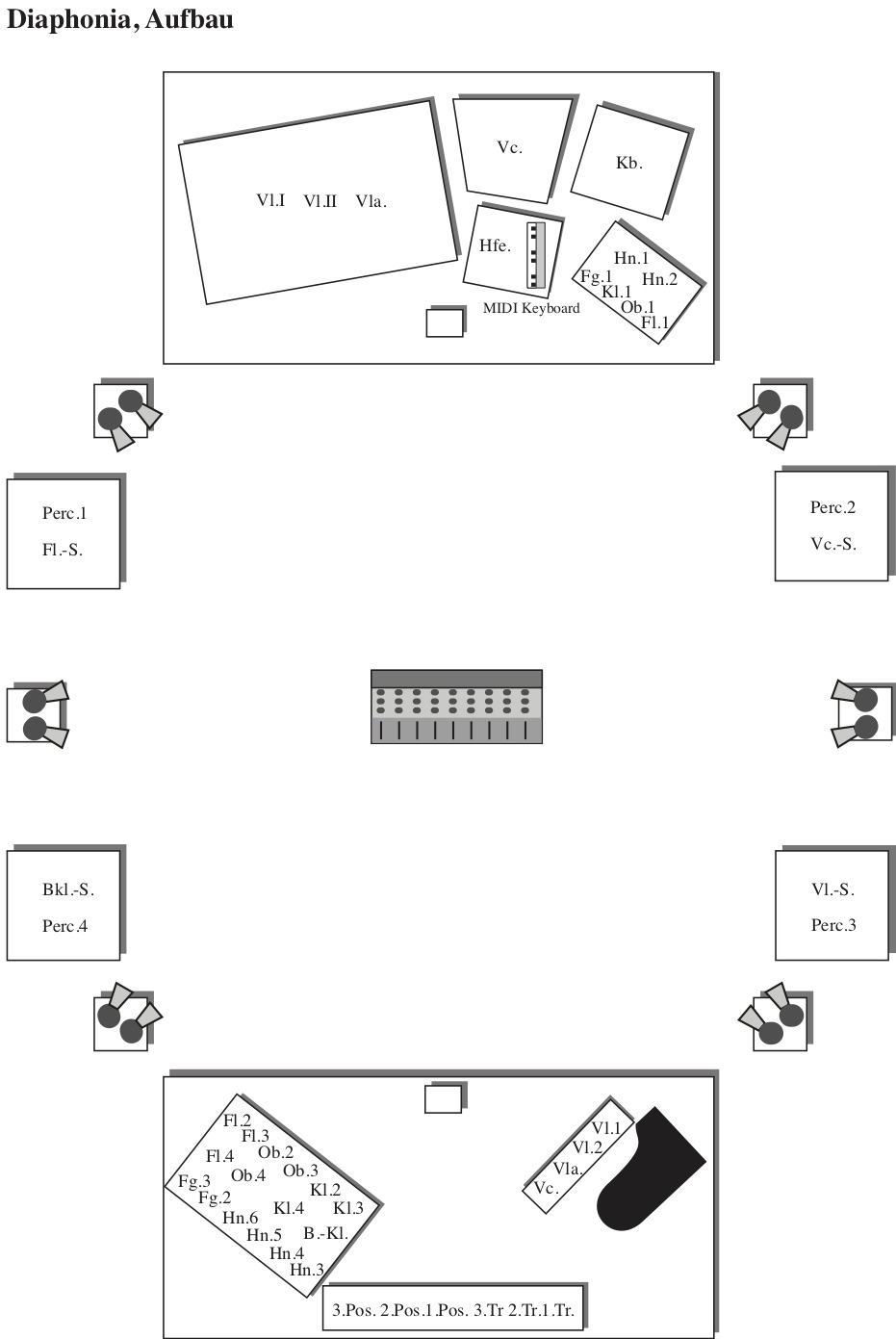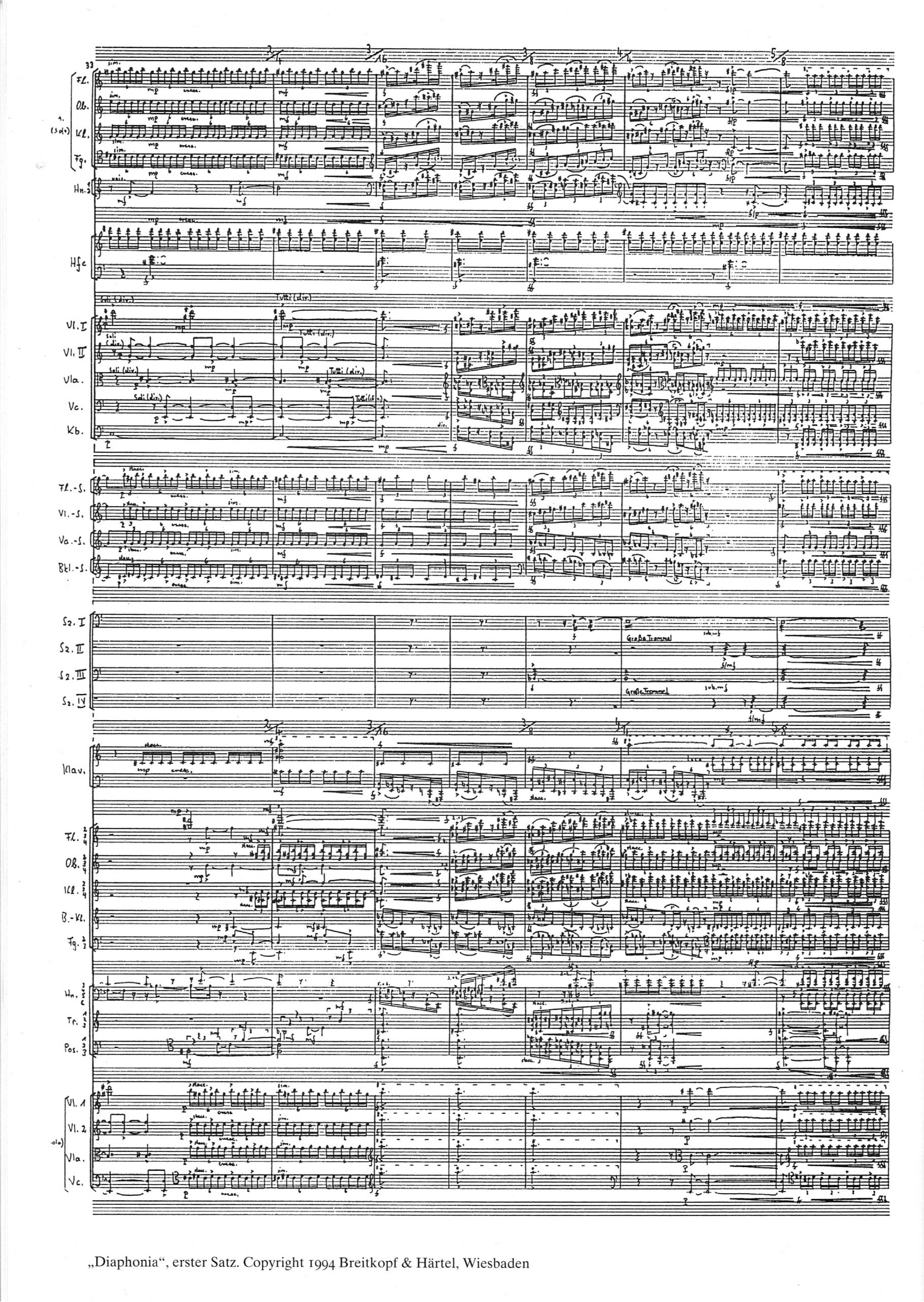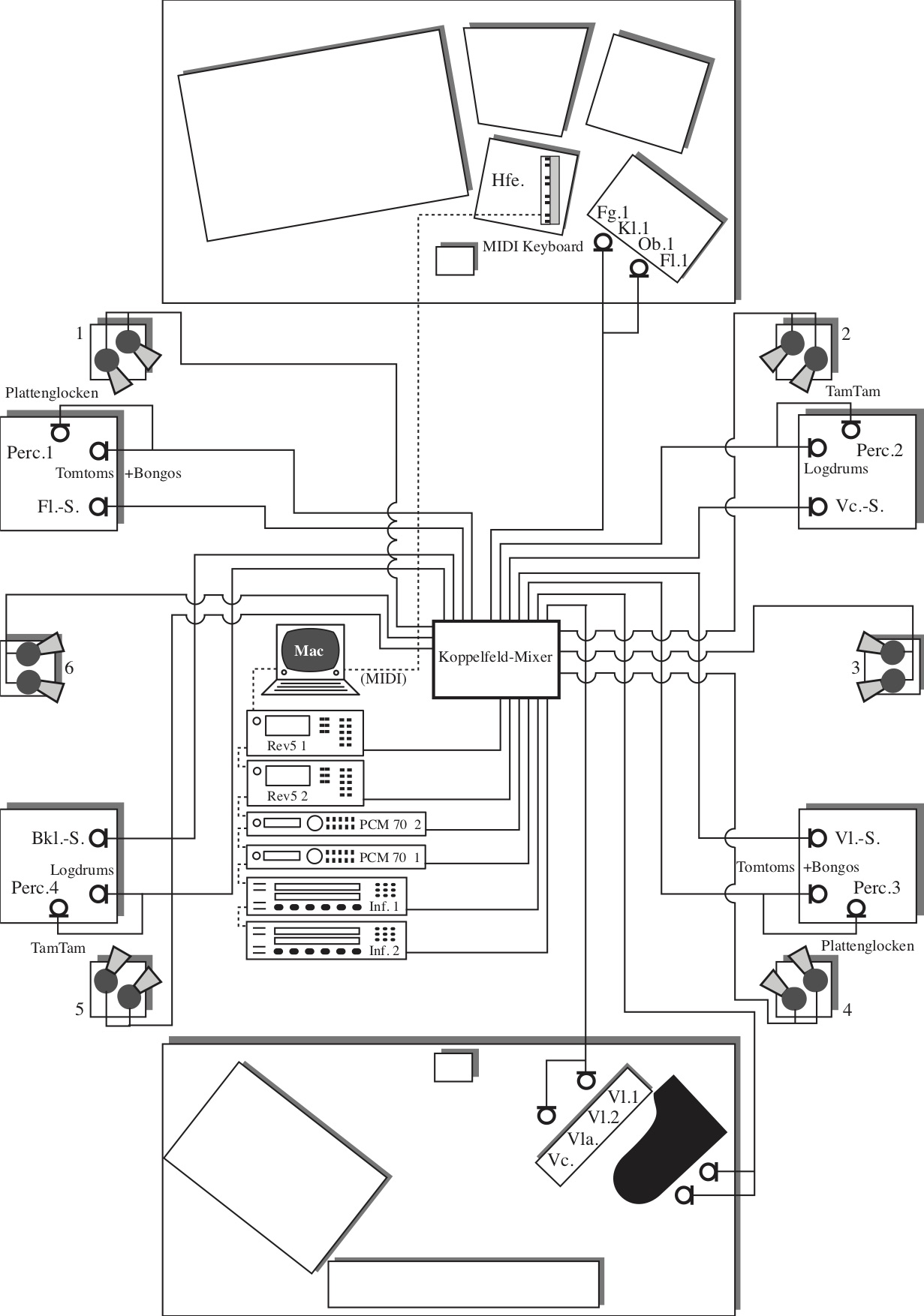Diaphonia (διαφωνια, “sounding apart”), Greek name of dissonance; dissonantia is the Latin translation of the Greek diaphonia, namely in contrast to the antiphonal and paraphonal symphonies, i.e. octave, fifth, fourth, the remaining intervals of the tonal system; so also still in medieval musicology: Cuius(symphoniae) contraria est diaphonia, id est voces discrepantes vel dissonae (Isidore, III, 20); dissonantia autem et diaphonia idem sunt (Marchettus of Padua, GS III, 80b).
(translated from the German original in: Riemann, Musiklexikon, Mainz 1967, p.223)
Diaphonia refers to harmony, motivic work, formal structure, instrumental placement in space, instrumentation, and the use of live electronics.
Commissioned by SWR Radio for Donaueschingen, 1995
INSTRUMENTATION
Soli: fl.(Picc.)vln.Vc.bcl.(cbcl.)pno
Orchestera: 4.4.4.bcl.3(3cfag.).-6.3.3.0.-perc(4)-hp-MIDI-Keyboard-str.:11.11.9.9.8.
live electronics
40 min.
FIRST PERFORMANCE
Armand Angster, bcl; Dagmar Becker, fl; Wolfgang Hock, Vl.;
Martin Ostertag, vc.; Yukiko Sugawara, pi.;
SWF Symphony Orchestra, cond: Michael Gielen,
co-cond: Oswald Sallaberger

About Michael obst
Michael Obst is a composer, pianist, and teacher. He began his successful composing career with electronic music and subsequently composed works for music theater, film and concert halls. His experience as a pianist with the Ensemble Modern, enriched his understanding of contemporary music. After 25 fulfilling years of teaching, he is now excited to once again concentrate on his own composition projects.
- INFO@MICHAEL-OBST.COM






